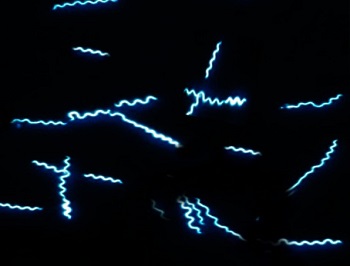Borrelia burgdorferi - Host Immunity, Lab Diagnosis, AST, Treatment
Host Immunity of Borrelia burgdorferi
The earliest antibody response and development of IgM is observed in response to OspC membrane protein, flagellar Ag (FlaA dn FlaB), or the fibronectin-binding protein. IgM levels peak within several weeks but may be detectable for several months.
IgG response, as host immunity of Borrelia burgdorferi, develops slowly during the first several weeks of disease and increases with Ab responses to Osp17 and some additional proteins p39 and p58.
Laboratory diagnosis of Borrelia burgdorferi
Borrelia burgdorferi can be visualized and cultured although serology is the best method for diagnosis of Lyme’s disease. Laboratory diagnosis of Borrelia burgdorferi can be done by the presence of erythema migrans in the early stage of the disease.
Specimen
The specimen collected for laboratory diagnosis of Borrelia burgdorferi includes:
peripheral blood
biopsy
CSF
synovial fluids
Microscopy
The direct detection method for laboratory diagnosis of Borrelia burgdorferi is done by microscopy.
The number of spirochetes in the blood of patients with Lyne borreliosis is below the limits of microscopic detection. But it can be visualized in tissue sections stained with Warthin-Starry silver stain.
Culture
The culture of B. burgdorferi may be attempted.
Procedure
It is done by the procedure written below:
Specimen inoculated into a tube of modified Kelly’s medium
Incubated at 30-40°C for 12 weeks under microaerophilic condition
Blind subcultures (0.1ml) are performed from the lower portion of broth to fresh media
Cultures are examined by dark-field or fluorescence microscopy after staining with Acridine orange

Fig: Borrelia burgdorferi dark-field microscopy (Source: ncbi.nlm.nih.gov)
Serodiagnosis
Serodiagnosis depends on the demonstration of specific Ab in the serum which persists for many years even after eradication of infection. The most commonly used tests are:
Indirect immunofluorescence assay (IFA)
ELISA (Enzyme-Linked Immunosorbent Assay)
Western blotting
* ELISA is used as a primary screening method. However, false-positive rates are high as a result of cross-reactivity.
* IFA is also used as a primary screening method. Specificity to IFA can be improved by adsorption of serum with Treponema phagedenis sonicate (IFA-ABS).
* Once, ELISA or IFA tests are positive, immunoblotting/Western blotting is done for confirmation.
Molecular diagnosis
PCR is used as a molecular diagnosis of Borrelia burgdorferi.
PCR has detected Borrelia burgdorferi DNA in clinical specimens from patients with early and late stages of Lyme's disease.
sensitivity and specificity of PCR depend on the specimen
AST of Borrelia burgdorferi
AST for Borrelia burgdorferi is generally not done
Treatment of Borrelia burgdorferi
Drugs of choice for treatment of Borrelia burgdorferi include:
Parenteral cephalosporins
1st stage of Lyme disease:
Doxycycline
Amoxicillin
Cefuroxime
If the initial treatment failed or later stages of the disease, then broad-spectrum cephalosporins such as:
Ceftriaxone
Cefotaxime
usually given oral regimes and not IV therapy